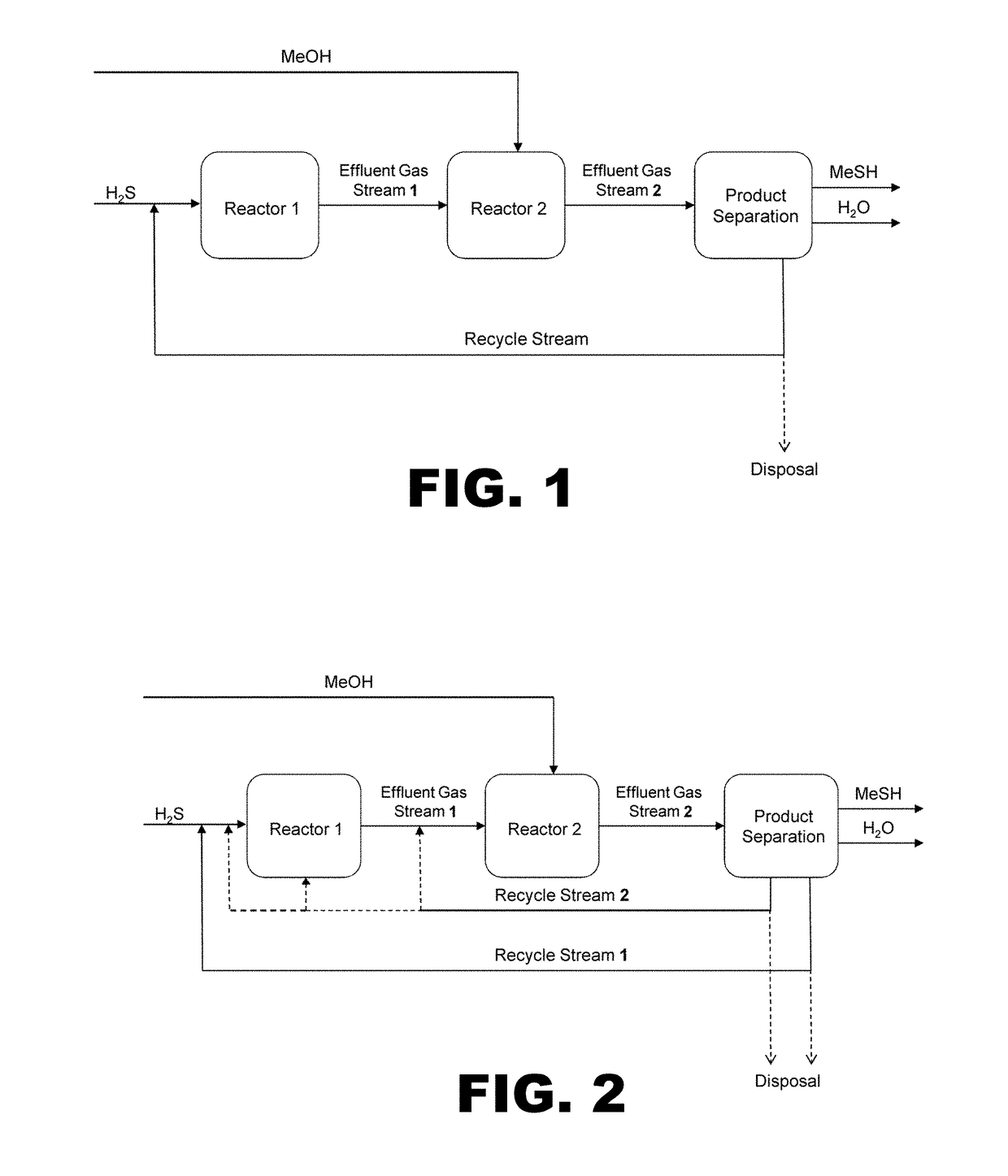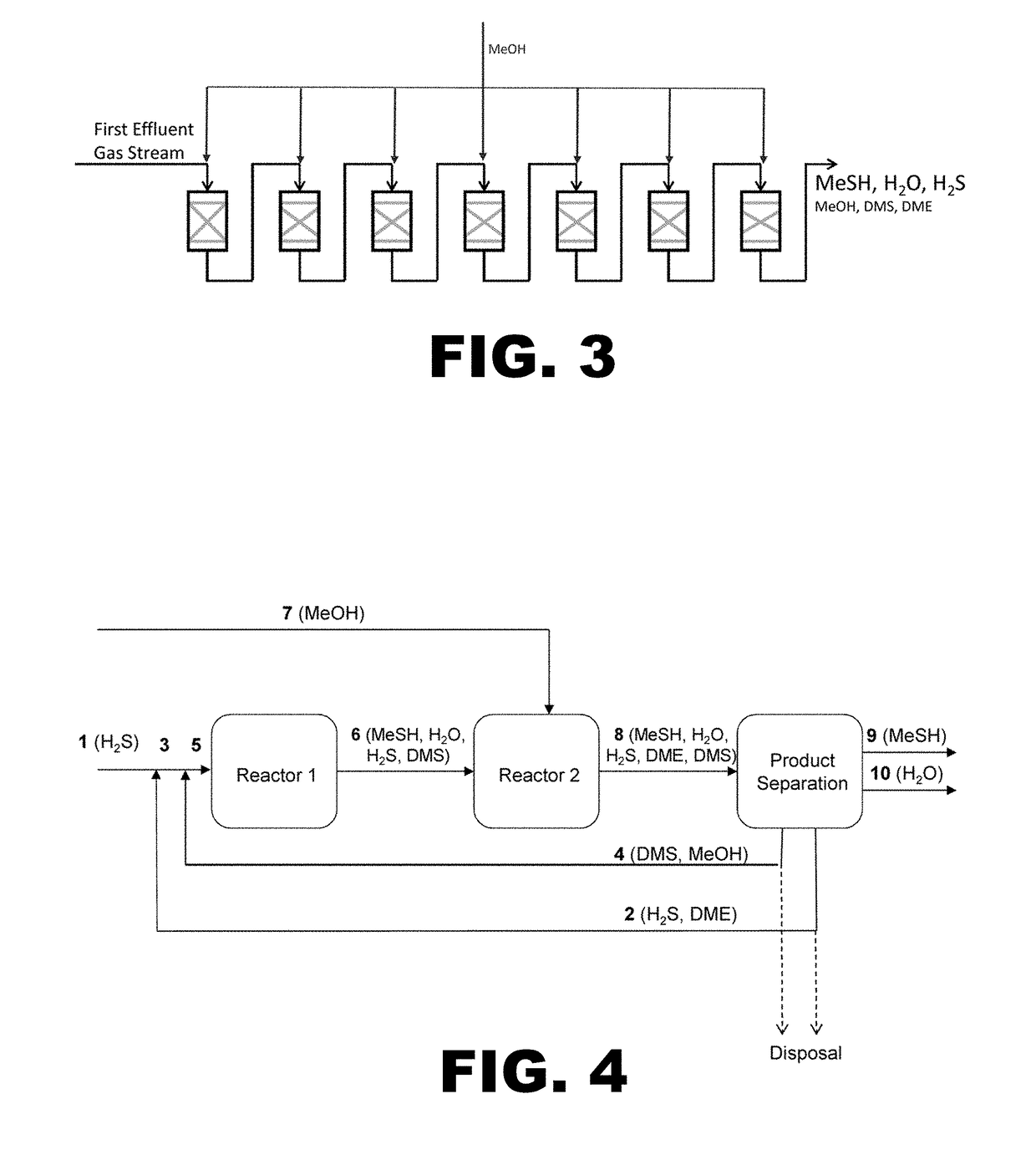Process for producing methyl mercaptan from dimethyl sulfide
- Summary
- Abstract
- Description
- Claims
- Application Information
AI Technical Summary
Benefits of technology
Problems solved by technology
Method used
Image
Examples
example 1
Sulfide Conversion to Methyl Mercaptan
[0066]The results from several iterations of the recycle process are provided in the table below. In each experiment, the recycle reactor is one adiabatic reactor stage with a fixed bed of crushed Al2O3 pellets diluted with inerts. Reactants consisted of hydrogen sulfide and dimethyl sulfide in the amounts indicated. The inlet temperature of the reactor in each experiment is 240° C. Temperature was controlled by hot oil heating and measured along vertical axis. The pressure of the inlet flow to the reactor was set by pressure valve, and the component flows set by hydrogen sulfide flow control and methanol / dimethyl sulfide pump. The composition of the product flowing from the reactor was measured by gas chromatography (GC).
[0067]As shown in experiment number HP5-3, no dimethyl sulfide was converted to methyl sulfide in the presence of methanol (2.3 mol / mol MeOH:DMS) despite a very low weight hourly space velocity. In contrast, with a 10-fold high...
example 2
Sulfide Conversion to Methyl Mercaptan
[0068]The results from several iterations of the recycle process are illustrated in FIG. 6. In each experiment, the recycle reactor is one adiabatic reactor stage with a fixed bed of spherical Al2O3 pellets. The inlet temperature of the reactor in each experiment is 240° C. and the reaction occurred at atmospheric pressure. Reactants consisted of hydrogen sulfide and dimethyl sulfide in a 20:1 molar ratio (red square and blue rhombus) or hydrogen sulfide, dimethyl sulfide, and methanol, where the molar ratio of hydrogen sulfide to dimethyl sulfide is 20:1 and the molar ratio of methanol to dimethyl sulfide is 0.3 (yellow triangle). The weight hourly space velocity in each experiment was 1 g DMS / h / g catalyst (blue rhombus), 0.33 g DMS / h / g catalyst (red square), and 0.86 g DMS / h / g catalyst (yellow triangle). Thermodynamically limited dimethyl sulfide conversion is shown by green triangles.
[0069]In Example 1, no dimethyl sulfide was converted to me...
PUM
| Property | Measurement | Unit |
|---|---|---|
| Temperature | aaaaa | aaaaa |
| Temperature | aaaaa | aaaaa |
| Temperature | aaaaa | aaaaa |
Abstract
Description
Claims
Application Information
 Login to View More
Login to View More - R&D
- Intellectual Property
- Life Sciences
- Materials
- Tech Scout
- Unparalleled Data Quality
- Higher Quality Content
- 60% Fewer Hallucinations
Browse by: Latest US Patents, China's latest patents, Technical Efficacy Thesaurus, Application Domain, Technology Topic, Popular Technical Reports.
© 2025 PatSnap. All rights reserved.Legal|Privacy policy|Modern Slavery Act Transparency Statement|Sitemap|About US| Contact US: help@patsnap.com



